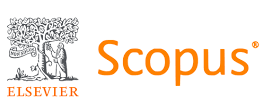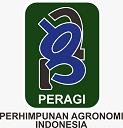Enhancing Vanilla Planifolia Generative Phase via IoT-Based Microclimate Control
Abstract
Vanilla (Vanilla planifolia) is one of the agricultural commodities with high economic value, but its cultivation faces various challenges, including climate change and suboptimal environmental management. Conventional microclimate control methods are primarily manual and reactive, often failing to maintain stable conditions during the critical phase of generation. Technological innovations, especially IoT-based microclimate controllers, enable real-time monitoring and automated regulation of temperature, humidity, and light, thereby reducing environmental fluctuations that negatively affect flowering and yield. This research aims to develop and apply an IoT-based microclimate controller that optimizes growth conditions during the generative phase of vanilla, and to evaluate its impact on growth and crop yields. The study was conducted over a 3-month generative period, using 30 vanilla plants per group (n = 60 in total), with three replications. Data were collected weekly and analyzed using descriptive statistics and t-tests to compare growth and yield performance. The results show that IoT-based microclimate controllers significantly improved optimal temperature and humidity stability, increasing plant growth and crop yields. The average stem length and number of flowers per plant increased by 30% and 25%, respectively, compared to the control group, while vanillin content rose from 1.8% to 2.5%. These findings offer new insights into sustainable vanilla cultivation management, which can be adopted by farmers to enhance productivity and quality. Recommendations for further research include developing more advanced systems, conducting cost-benefit analyses, and applying these technologies in different climatic conditions.
Keywords
Full Text:
PDFReferences
Badrudin, U., Ghulamahdi, M., Purwoko, B. S., & Pratiwi, E. (2023). Pengaruh Aplikasi Mikroba terhadap Fisiologis Beberapa Varietas Padi Fase Vegetatif pada Kondisi Salin Tergenang. Agro Bali : Agricultural Journal, 6(3), 621–635. https://doi.org/10.37637/ab.v6i3.1279
Butel, N., & Köhler, C. (2024). Flowering plant reproduction. Current Biology, 34(8), R308–R312. https://doi.org/10.1016/j.cub.2024.02.050
Ciriminna, R., Fidalgo, A., Meneguzzo, F., Parrino, F., Ilharco, L. M., & Pagliaro, M. (2019). Vanillin: The Case for Greener Production Driven by Sustainability Megatrend. ChemistryOpen, 8(6), 660–667. https://doi.org/10.1002/open.201900083
Das, S., & Prakash, B. (2024). Effect of Environmental Factors on Essential Oil Biosynthesis, Chemical Stability, and Yields. In Plant Essential Oils (pp. 225–247). Springer Nature Singapore. https://doi.org/10.1007/978-981-99-4370-8_10
Diez, M. C., Osorio, N. W., & Moreno, F. (2016). Effect of dose and type of fertilizer on flowering and fruiting of vanilla plants. Journal of Plant Nutrition, 39(9), 1297–1310. https://doi.org/10.1080/01904167.2015.1098673
FAO. (2021). The State of Food Security and Nutrition in the World 2021. FAO, IFAD, UNICEF, WFP and WHO. https://doi.org/10.4060/cb4474en
Galushasti, A., Ningtyas, D. P., Jumiatun, J., & Mukhlisin, I. (2024). Improvement of Maize Growth and Production through a Combination of Leaf Defoliation and SP-36 Dosage in a Close Cropping System. Agro Bali : Agricultural Journal, 7(1), 24–32. https://doi.org/10.37637/ab.v7i1.1294
Gupta, S. K., Nain, M. S., Singh, R., Mishra, J. R., & Lata, A. (2023). Exploring the Entrepreneurial Climate and Attributes of Agripreneurs and its Determinants. INDIAN JOURNAL OF EXTENSION EDUCATION, 59(2), 93–97. https://doi.org/10.48165/IJEE.2023.59220
Heryanto, R., Hadipoentyanti, E., Wahyuni, S., & Udarno, L. (2023). Morphological characters and yields of five Vanilla (Vanilla planifolia Andrews) clones in Bali. IOP Conference Series: Earth and Environmental Science, 1255(1), 012014. https://doi.org/10.1088/1755-1315/1255/1/012014
Ibarra-Cantún, D., Delgado-Alvarado, A., Herrera-Cabrera, B. E., Soto-Hernández, R. M., Salazar-Rojas, V. M., & Aguilar, M. I. (2018). Effect of the environmental condition of Vanilla planifolia Jacks. ex Andrews cultivation on phytochemical concentration. Revista Chapingo Serie Horticultura, 24(2), 151–165. https://doi.org/10.5154/r.rchsh.2017.08.031
Kaushik, B., Singh, K., Tiwari, D. K., & Singh, U. K. (2023). Impact of Climate Change on Crop Yield due to Pests and Crop Diseases: Future Projections. Microscopy and Microanalysis, 29(Supplement_1), 56–58. https://doi.org/10.1093/micmic/ozad067.022
Morchid, A., El Alami, R., Raezah, A. A., & Sabbar, Y. (2024). Applications of internet of things (IoT) and sensors technology to increase food security and agricultural Sustainability: Benefits and challenges. Ain Shams Engineering Journal, 15(3), 102509. https://doi.org/10.1016/j.asej.2023.102509
Munarso, S. J., Rahardjo, Y. P., Sjafrina, N., Arianto, A., Hadipoentyanti, E., Astuti, P., Setiadi, A., Koeslulat, E. E., Lintang, M. M. J., Sulistyorini, S., Egayanti, Y., Elmatsani, H. M., Djafar, M. J., Susetyo, E. B., Lanjar, L., & Hadipernata, M. (2024). From bean to market: exploring the chemical and production dynamics of high-quality Indonesian vanilla. Frontiers in Sustainable Food Systems, 8. https://doi.org/10.3389/fsufs.2024.1425656
Narayana, T. L., Venkatesh, C., Kiran, A., J, C. B., Kumar, A., Khan, S. B., Almusharraf, A., & Quasim, M. T. (2024). Advances in real time smart monitoring of environmental parameters using IoT and sensors. Heliyon, 10(7), e28195. https://doi.org/10.1016/j.heliyon.2024.e28195
Pratama, F. E., Irwan, S. N. R., & Rogomulyo, R. (2021). Fungsi Vegetasi sebagai Pengendali Iklim Mikro dan Pereduksi Suara di Tiga Taman Kota DKI Jakarta. Vegetalika, 10(3), 214. https://doi.org/10.22146/veg.39112
Rouphael, Y., Kyriacou, M. C., Petropoulos, S. A., De Pascale, S., & Colla, G. (2018). Improving vegetable quality in controlled environments. Scientia Horticulturae, 234, 275–289. https://doi.org/10.1016/j.scienta.2018.02.033
Sele, J. P., & Wanjiku, C. (2024). Sustainable Vanilla Farming in Kilifi, Kenya: A Pathway to Biodiversity Conservation. Greener Journal of Social Sciences, 14(2), 129–135. https://doi.org/10.15580/gjss.2024.2.093024120
Tan, F., & Swain, S. M. (2006). Genetics of flower initiation and development in annual and perennial plants. Physiologia Plantarum, 128(1), 8–17. https://doi.org/10.1111/j.1399-3054.2006.00724.x
Van Dyk, S., McGlasson, W. B., Williams, M., Spooner-Hart, R., & Holford, P. (2024). Vanilla planifolia: Artificial and Insect Pollination, Floral Guides and Volatiles. Plants, 13(21), 2977. https://doi.org/10.3390/plants13212977
Wahyudi, A., Ermiati, E., & Sujianto, S. (2023). Analysis of sustainability ranking of vanilla cultivation systems in West Java, Indonesia. IOP Conference Series: Earth and Environmental Science, 1133(1), 012062. https://doi.org/10.1088/1755-1315/1133/1/012062
Wahyudi, A., Permadi, R. A., & Ermiati. (2021). Technical risk control system of sustainable vanilli cultivation in Indonesia. E3S Web of Conferences, 306, 02036. https://doi.org/10.1051/e3sconf/202130602036
Watteyn, C., Reubens, B., Bolaños, J. B. A., Campos, F. S., Silva, A. P., Karremans, A. P., & Muys, B. (2023). Cultivation potential of Vanilla crop wild relatives in two contrasting land use systems. European Journal of Agronomy, 149, 126890. https://doi.org/10.1016/j.eja.2023.126890
Wolfert, S., Ge, L., Verdouw, C., & Bogaardt, M.-J. (2017). Big Data in Smart Farming – A review. Agricultural Systems, 153, 69–80. https://doi.org/10.1016/j.agsy.2017.01.023
Zhao, Z., Cao, L., Deng, J., Sha, Z., Chu, C., Zhou, D., Wu, S., & Lv, W. (2020). Modeling CH4 and N2O emission patterns and mitigation potential from paddy fields in Shanghai, China with the DNDC model. Agricultural Systems, 178, 102743. https://doi.org/10.1016/j.agsy.2019.102743
Refbacks
- There are currently no refbacks.



























